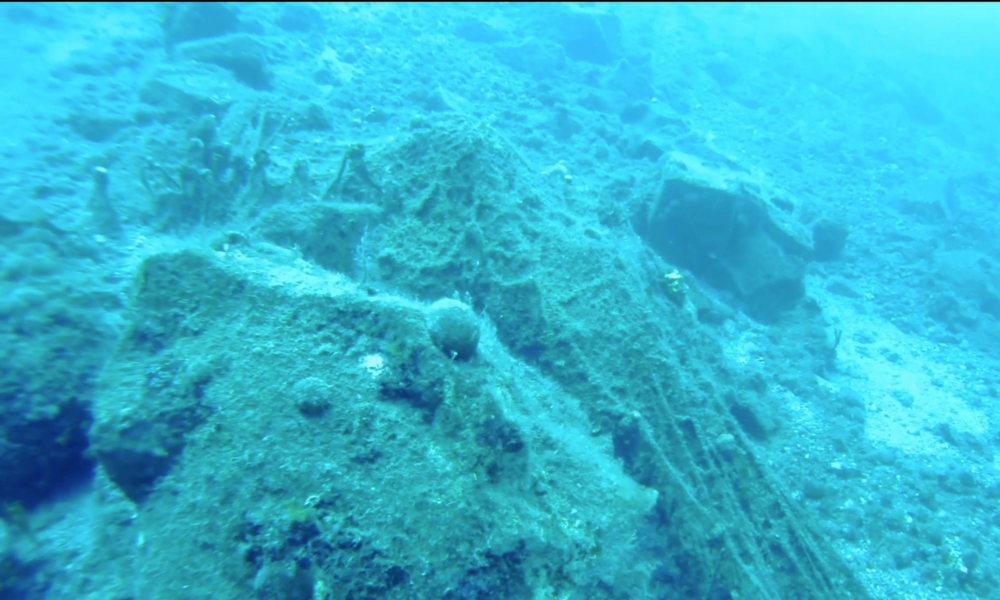Ghost nets and its adverse effect on marine life
The plastic presence in our seas is rapidly increasing. According to the International Union for Conservation of Nature (IUCN), over 8 million tons of plastic are discarded into the ocean annually, comprising 80% of marine debris. The consequences for marine life, ingesting or entangled in this waste, are significant. Ghost nets make this big problem even worse. A ghost net is a fishing net that’s been lost or abandoned in the ocean.

According to a 2018 study in Scientific Reports, ghost nets makeup at least 46 percent of the Great Pacific Garbage Patch. There are silent killers responsible for trapping and harming a significant number of marine animals such as sharks, rays, bony fish, sea turtles, dolphins, whales, crustaceans, and sea birds. These can remain stuck in nets for weeks, months or even years. As a result they are often found with life threatening injuries - if they haven’t already suffered or died from exhaustion, starvation or predation! They can cause further destruction by smothering coral reefs, devastating shorelines, and damaging boats.
Ghost net in Santorini seabed found by Hydrone and NGO Aegean Rebreath

A few months back, Hydrone, a company based in Greece that provides underwater inspection services, had an exciting adventure in Greece. In June, some divers discovered dangerous ghost nets lurking on the seabed of Santorini.

These nets were left behind by fishing boats and posed a threat to marine life. To tackle this problem and clean up the seabed, they teamed up with NGO Aegean Rebreath and reached out to Hydrone for assistance. Hydrone gladly seized the opportunity to use the X3 ROV from Blueye to locate the ghost nets, allowing the divers to focus on removing them quickly.

However, the operation wasn't simple! Santorini's seabed has a unique shape due to volcanoes, making it important to navigate carefully to avoid getting the X3 ROV stuck on big rocks. The person controlling the ROV did an excellent job skillfully maneuvering through the uneven seabed while keeping a close eye on the camera to spot the hidden nets. After searching for some time, they successfully found the ghost nets lying on the seabed, at depths ranging from 30 to 38 meters.

The navigation of the ROV took approximately 20 minutes until we spotted the precise location. At significant depths and in open sea conditions, the risk of swinging off course was ever-present, potentially causing significant delays to the operation.
- Nikos Sarbanis, Hydrone
Kudos to Hydrone and NGO Aegean Rebreath for the fantastic job in removing the ghost nets, making the seabed safer for marine creatures.
Untangling the dilemma
Many fishers, fishing industry partners, ports, NGOs, and researchers have joined forces to minimize the effects of ghost nets or ghost gears underwater.
- Prevention includes raising awareness among fishing gear designers, educating fishers on proper gear disposal
- Implementing regulatory measures to prevent gear loss and establish innovative fishing gear disposal and recycling methods.
- Design and produce gear that poses no harm if lost at sea.
- Use of modern technology like ROVs (Remotely Operated Vehicles) to locate the lost fishing gear at sea.
Blueye ROV as tool in environmental protection

Having a modern tool like, Blueye X3 underwater drone can be helpful in detecting ghost nets and other debris. The size of the Blueye ROV makes it easy to get closer to the objects you want to inspect underwater - even in narrow places. Auto-depth and auto-heading features help to keep the ROV stable improving the maneuverability and video capture quality.

Additionally, the ROV's silent propellers ensure minimal disruption to marine life, making it an ideal instrument for safeguarding our oceans.
Interested in learning more about how underwater drones can support your business?
